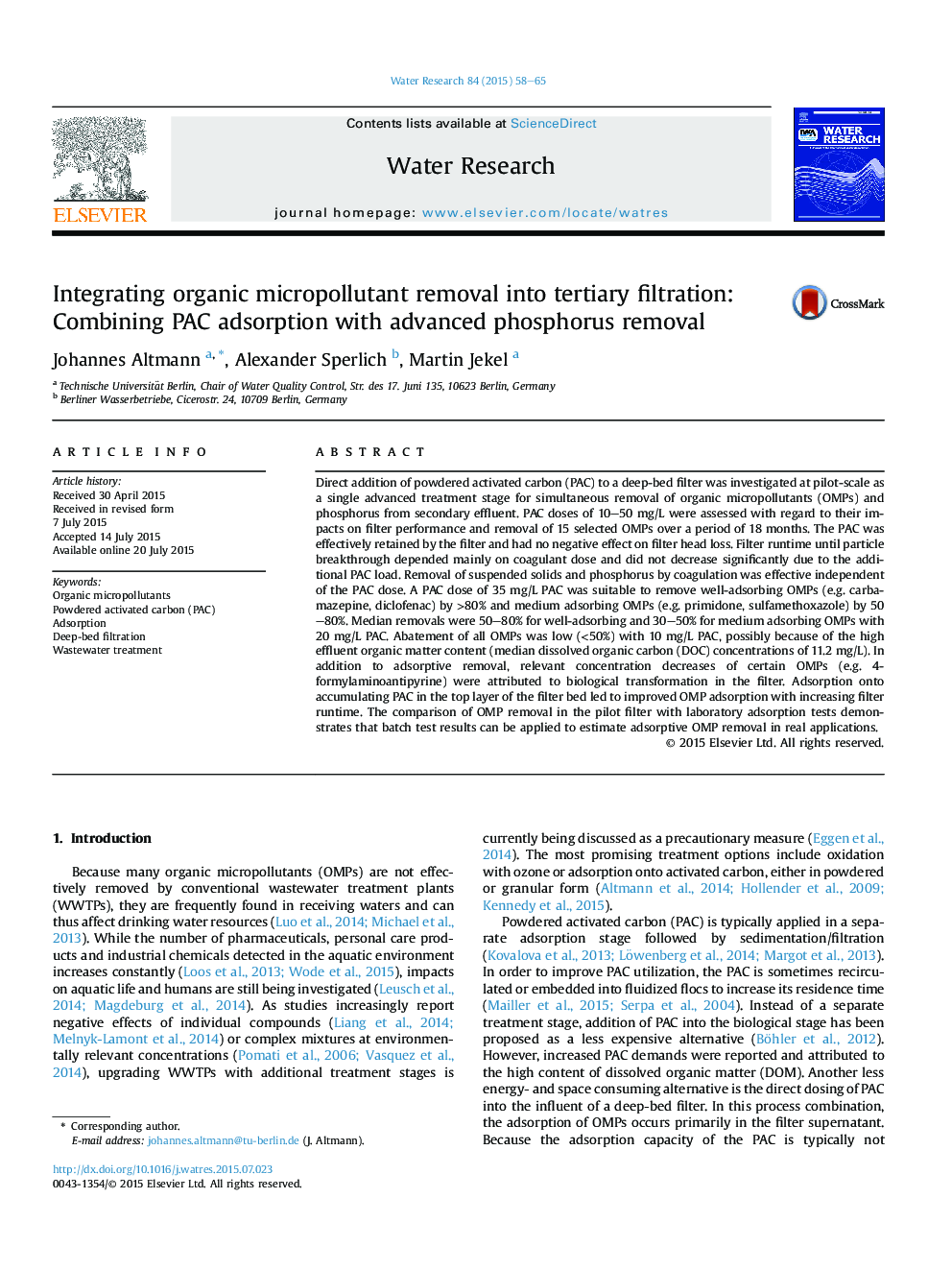| کد مقاله | کد نشریه | سال انتشار | مقاله انگلیسی | نسخه تمام متن |
|---|---|---|---|---|
| 4481073 | 1623084 | 2015 | 8 صفحه PDF | دانلود رایگان |

• Pilot-scale investigation of PAC direct dosing to coagulation/filtration.
• Stable operation is possible with up to 50 mg/L PAC.
• PAC addition has only minor impacts on filter runtime, head loss, effluent quality.
• Well-adsorbing micropollutants are removed >80% with 35 mg/L PAC.
• Adsorptive micropollutant removal can be estimated from lab-scale batch tests.
Direct addition of powdered activated carbon (PAC) to a deep-bed filter was investigated at pilot-scale as a single advanced treatment stage for simultaneous removal of organic micropollutants (OMPs) and phosphorus from secondary effluent. PAC doses of 10–50 mg/L were assessed with regard to their impacts on filter performance and removal of 15 selected OMPs over a period of 18 months. The PAC was effectively retained by the filter and had no negative effect on filter head loss. Filter runtime until particle breakthrough depended mainly on coagulant dose and did not decrease significantly due to the additional PAC load. Removal of suspended solids and phosphorus by coagulation was effective independent of the PAC dose. A PAC dose of 35 mg/L PAC was suitable to remove well-adsorbing OMPs (e.g. carbamazepine, diclofenac) by >80% and medium adsorbing OMPs (e.g. primidone, sulfamethoxazole) by 50–80%. Median removals were 50–80% for well-adsorbing and 30–50% for medium adsorbing OMPs with 20 mg/L PAC. Abatement of all OMPs was low (<50%) with 10 mg/L PAC, possibly because of the high effluent organic matter content (median dissolved organic carbon (DOC) concentrations of 11.2 mg/L). In addition to adsorptive removal, relevant concentration decreases of certain OMPs (e.g. 4-formylaminoantipyrine) were attributed to biological transformation in the filter. Adsorption onto accumulating PAC in the top layer of the filter bed led to improved OMP adsorption with increasing filter runtime. The comparison of OMP removal in the pilot filter with laboratory adsorption tests demonstrates that batch test results can be applied to estimate adsorptive OMP removal in real applications.
Figure optionsDownload high-quality image (278 K)Download as PowerPoint slide
Journal: Water Research - Volume 84, 1 November 2015, Pages 58–65